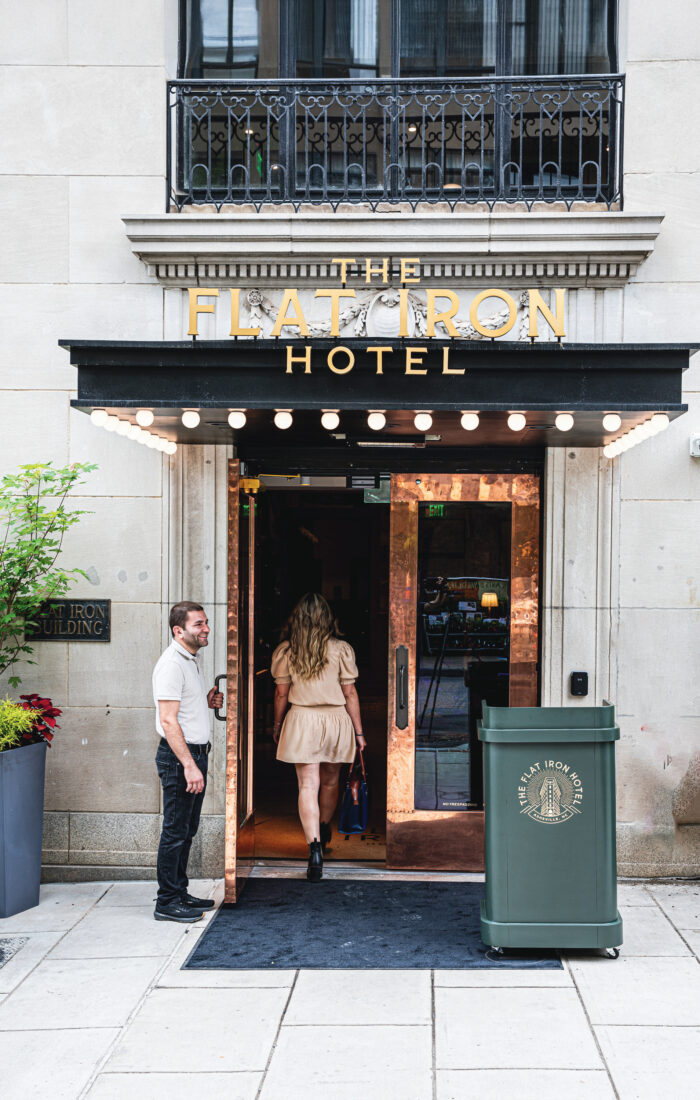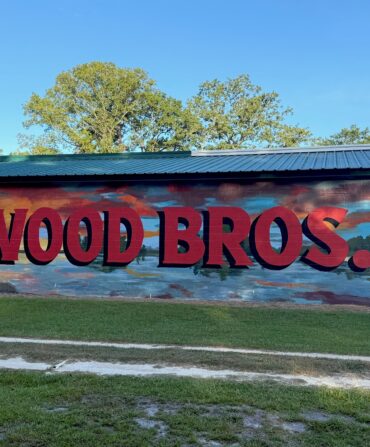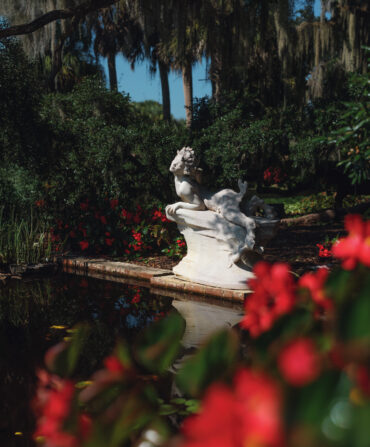There’s no telling which beautiful detail will first catch your eye when you step up to the Flat Iron Hotel. As with many surviving buildings of its time, the 1926 structure in downtown Asheville brims with period-specific charm. You’ll probably notice the building’s striking wedge shape and the stylistic details that an expert would dub Beaux-Arts motifs. Perhaps you’ll spot the illuminated glass blocks at the sidewalk entrance to Luminosa, the in-house Italian eatery off the first-floor lobby. Or marvel at the pink marble cladding on the grand staircase. It may be that the steps to the subterranean speakeasy, worn in the center from a century of foot traffic, will linger in your memory. Whichever element moves you, at some point during your stay, you’ll realize you, too, have now become a part of this place’s long, fascinating life.
The Flat Iron Building was considered one of Asheville’s first skyscrapers, and over the decades it has served as office space for local entrepreneurs and a radio station. But in 2018, the local firm Rowhouse Architects won the bid for a massive restoration project to take the Flat Iron into the modern era as a hotel with rooftop patios, a basement bar, and a restaurant. After years of work, halted briefly by COVID, the Flat Iron Hotel opened its doors in May 2024. Guests and locals alike enjoyed date-night dinners and the chic guest rooms named after famous folks with a connection to Asheville, such as Thomas Wolfe and Zelda Fitzgerald. That is, until business got interrupted again a few months later—this time by Hurricane Helene.
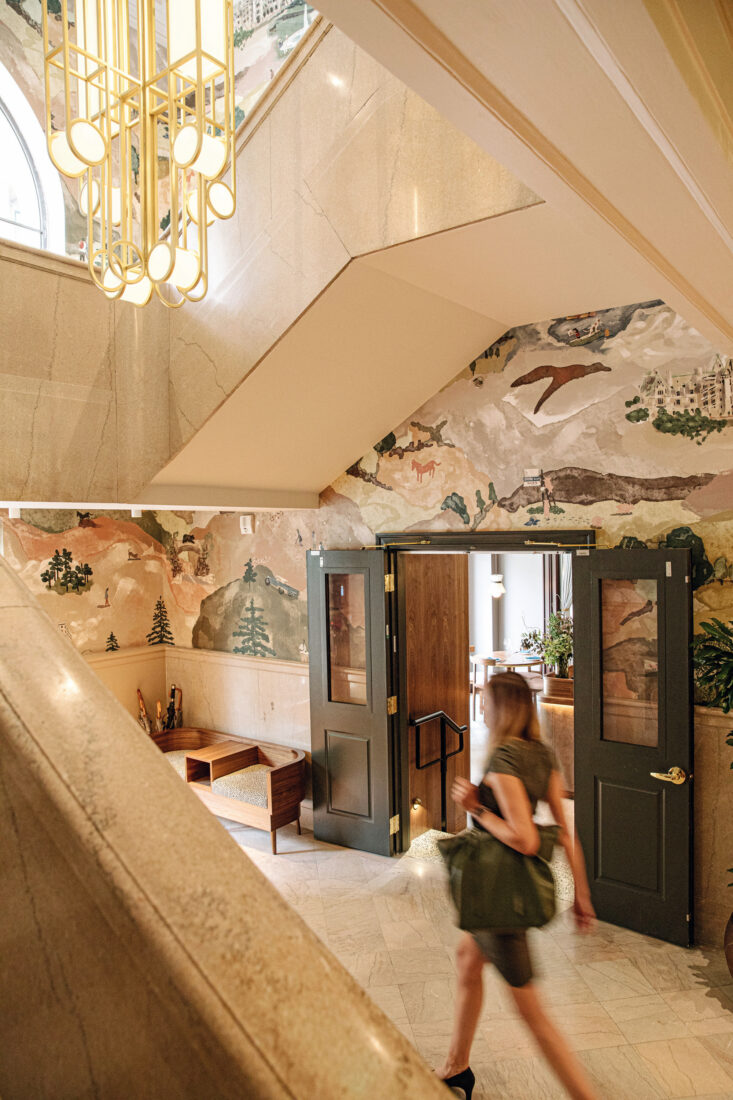
Almost fully occupied when Helene pummeled the mountains on September 27, the Flat Iron made good on its promise of excellent hospitality, even opening its doors to new guests who were trapped in town, before the storm’s destruction forced the hotel to close on September 29. A month later, Luminosa reopened using external water tanks, and after water was restored to downtown Asheville, the hotel at large did, too, that November. The Flat Iron has been humming with energy ever since.

Every glance inside rewards with a glimmering eyeful, every step spins a tale. The Rowhouse architects, developers, and Mey & Co. design team took enormous pains to pay homage to the Flat Iron’s many lives and past tenants. On the way to your room, even the floors will speak to you. “The original terrazzo is only partially covered by new carpet runners,” says Shawn McKeever, a partner at Rowhouse. “Guests can see the fine art of terrazzo installation—how the wall base and floors were poured in a single pour and seamlessly tie in to the plaster walls.” Original transom windows top the doors along the guest room hallways; several faux doors are emblazoned with gilded signage for the building’s businesses of yore, complete with a small, placard-mounted biography of the featured enterprise, like WWNC, Asheville’s first radio station, which broadcast bluegrass beginning in the twenties.

The hotel leaves an indelible impression despite its relatively wee footprint. “The building is smaller than you think it is because it’s triangular, about half the size of a normal hotel,” says Jeff Dalton, Rowhouse’s president. These parameters meant the designers could waste no space, nor overlook any detail. Toward the triangle’s apex on each guest floor, a community beverage station allows patrons to brew coffee or grab a deck of playing cards. At cocktail hour and at breakfast, the top floor opens into a welcoming indoor-outdoor café and bar. There, guests can step out onto any of three patios with expansive views that underscore Asheville’s “Land of the Sky” nickname. Downstairs, the original boiler room door conceals Red Ribbon Society, a moody, 1920s-style speakeasy named after the Prohibition-era custom in Asheville of wearing the bright fabric to show support for imbibing.
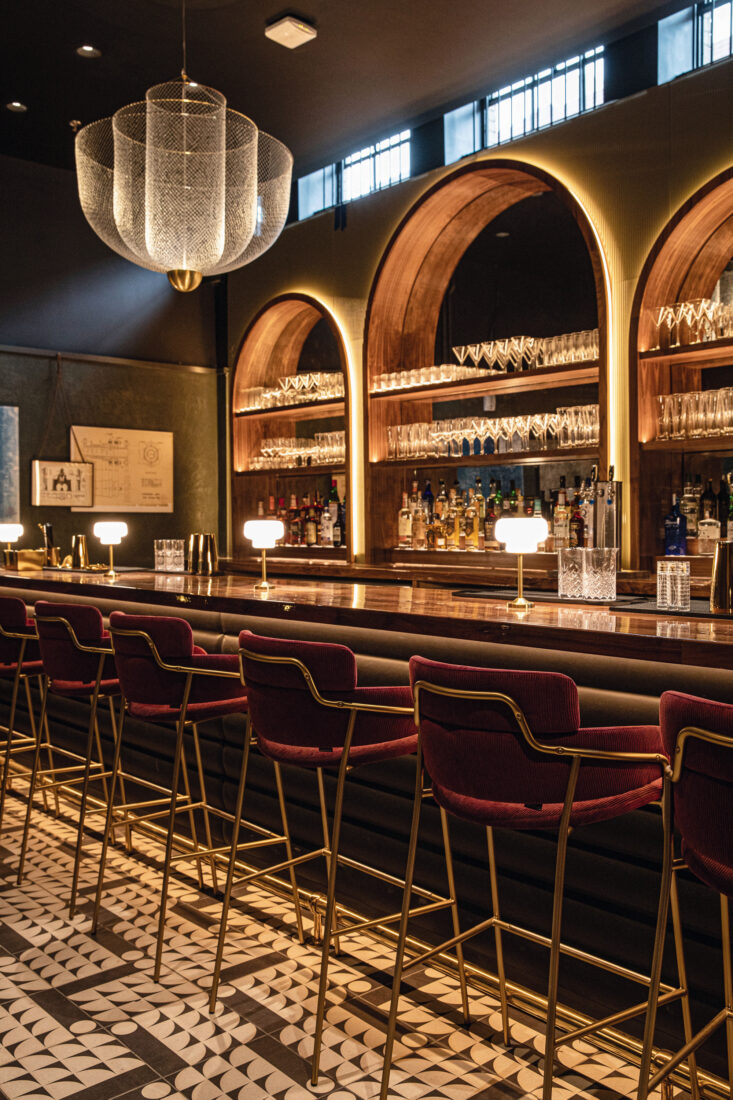
Luminosa also manages to nail period-appropriate styling while remaining thoroughly “Asheville” with its friendliness to all who cross the threshold. Helmed by executive chef Graham House and chef de cuisine Sean McMullen, the restaurant specializes in whole-animal butchery, seasonal mountain produce, and live-fire cooking. Dishes like trout with corn pudding and pasta with fresh corn and blackberries “pay homage to childhood in this area,” too, House says. Food and beverage director Sarah Charles Hereford helps diners pair wines beautifully, recommending a bittersweet or high-acidity sip to accompany such bites as a giant wood-fired lion’s mane mushroom or a roasted half chicken with muscadines.
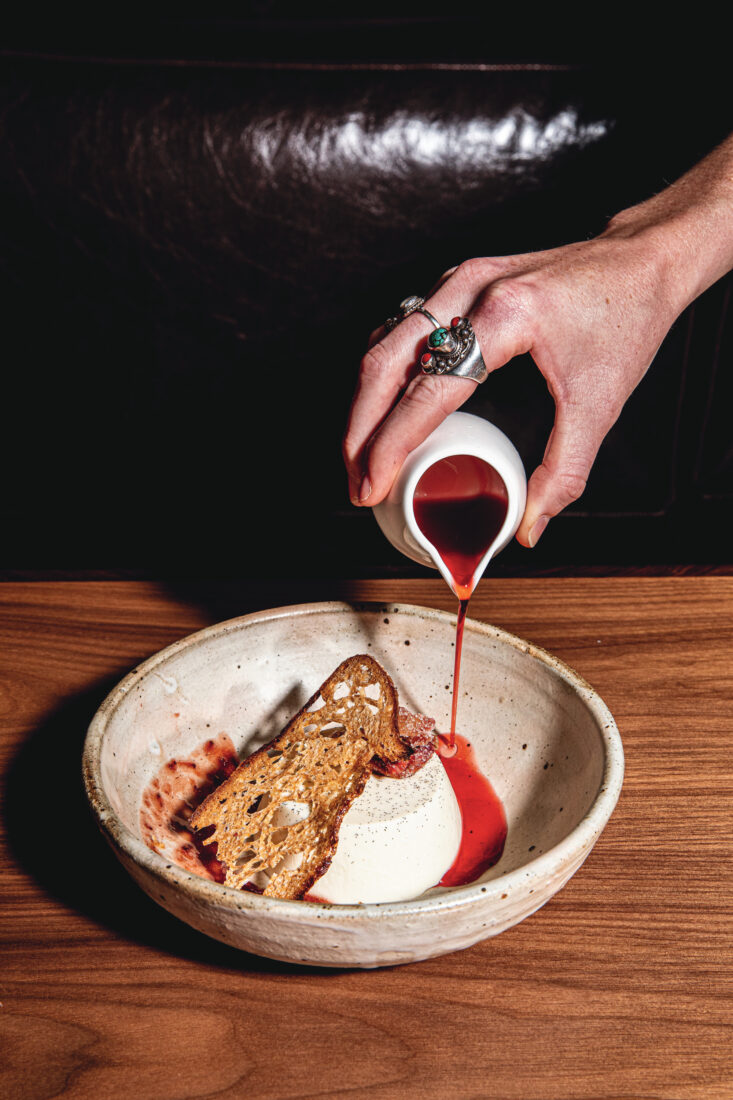
Who knows which of these little moments will stay with you as you head home from the Flat Iron, perhaps after a farewell sip of hot toddy on a balcony overlooking the Blue Ridge. But through them all, you won’t forget how the hotel embodies Asheville’s storied past, hard-earned resilience, and ever-welcoming present.


